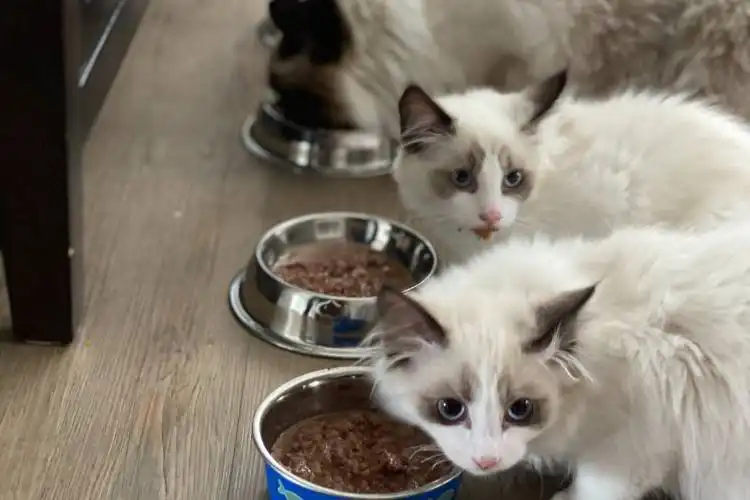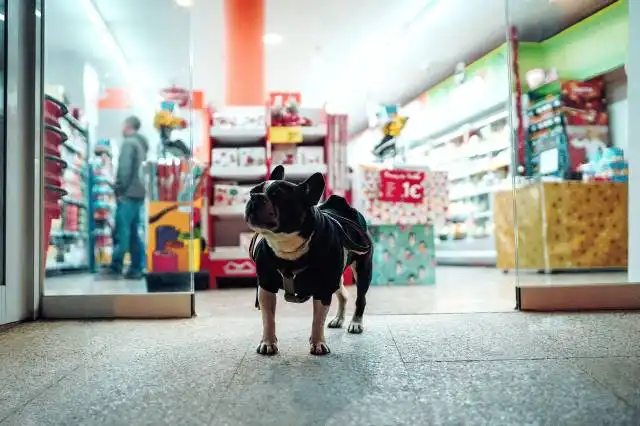Start a Petting Zoo
Building Havens of Happiness: The Magic of Petting Zoos
| Updated


PETTING ZOO
Imagine connecting people with the animal kingdom in a touchy-feely kind of way - that's essentially what a petting zoo business does. It offers a golden opportunity to pet lovers, aspiring vets, the young and the young at heart, empowering them to interact with and learn about a variety of animals. Running a petting zoo doesn't just put you in the "furry friends" business, but in the perpetual smile industry as well, because let's get real - who wouldn't love spending their day with endearing animals! A petting zoo is your ticket to creating a small haven of happiness, harmony, and hooves.
Jump to Business Plan
RELATED BUSINESS IDEAS
Browse ALL Pets & Animals Business Ideas
Discover Your Perfect Domain
Unlock the door to your online success with our hand-picked selection of premium domain names. Whether you're starting a new venture or rebranding an existing one, the right domain can set the tone for your digital presence. Browse through our curated list, each with its unique potential to enhance your brand's visibility and credibility.
PETTING ZOO MINI BUSINESS PLAN
This a quick reality check to help you identify the strengths and weaknesses of your business concept before you dive in.
Business Idea: Petting Zoo
Expected Percent Margin:
- Gross Margin: 30-50%
- Net Profit Margin: 10-15%
Earnings Expectations:
- Daily Earnings: $100 - $400
- Weekly Earnings: $700 - $2800
- Monthly Earnings: $3000 - $12000
- Annual Earnings: $36,000 - $144,000
Actions to Hit Those Numbers:
Animal Care and Maintenance:
- Initial Investment: Varies depending on number and type of animals, but could range from $5,000-$30,000.
- Animal Care: Budget for feed, vitamins, and medical check-ups.
Marketing and Customer Acquisition:
- Social Media: Post cute animal content 5-7 times a week. Engage with followers, thanking them for visits and sharing their posts.
- Local Advertising: Budget $300-$500 monthly for local ad placements and partnerships with schools, daycare centers, and families.
Customer Experience:
- Staffing: Ensure adequate staff trained in animal care and visitor management.
- Pricing: Have flexible pricing strategies (discounts for groups, children, seniors, etc.).
Cost Control:
Rent/Property:
- Rent: Look for a location where rent/mortgage costs less than 15-20% of expected monthly sales. - Property: Consider investing in a property for long term benefits.Utilities, Maintenance, and Other Overheads:
- Utilities: Expect to pay around $200-$800 monthly. - Maintenance: Budget $300-$500 for animal habitats and customer facilities.
Business Operations:
- Operating Hours: Open for a minimum of 5 days weekly, at least 6-8 hours per day to maximize visitor count.
- Transaction Volume: Aim for 20-50 transactions per day (single visitors or groups), with an average ticket price of $5-$10.
Please, consult a financial advisor to get personalized advice. All the estimates provided here can vary widely according to geography, local regulations, and individual entrepreneurial skills.
NOT WHAT YOU HAD IN MIND? Here are more ideas



Browse ALL Pets & Animals Business Ideas
Grab Your Business Website Name
Before you get caught up in the whirlwind of setting up your business, invest in a domain name. It's a small but significant step that lays the foundation for your brand and makes it easier for customers to find and trust you. Just like you wouldn't build a house without securing the land first, don't build a business without securing your domain name.
"Why? Can't that wait?" Here's why it shouldn't
Step 1: Determine if the Business is Right Endeavor
Breakdown of Startup Expenses
Starting a petting zoo is a large undertaking and requires a significant investment. Before starting a petting zoo, it is important to understand the costs associated with the endeavor. Startup expenses include the cost of land, construction of enclosures and pens, and the cost of animals. Depending on the size and scope of the petting zoo, these costs can range from a few thousand dollars to hundreds of thousands of dollars. Additionally, there may be other costs associated with the business, such as legal fees, marketing, and insurance. It is important to research all of the potential costs before starting a petting zoo.
Breakdown of Ongoing Expenses
In addition to the startup costs, there are also ongoing expenses associated with running a petting zoo. These expenses include the cost of food and bedding for the animals, veterinary care, and staffing costs. Additionally, there may be costs associated with maintaining the enclosures and pens, such as repairs and renovations. It is important to factor in these costs when determining if a petting zoo is the right business endeavor.
Examples of Ways to Make Money
There are a variety of ways to make money with a petting zoo. One of the most common ways is to charge admission fees. Additionally, petting zoos can make money by offering special events, such as birthday parties and educational programs. Petting zoos can also make money by selling souvenirs, such as t-shirts and stuffed animals. Finally, petting zoos can make money by offering animal-related services, such as grooming and boarding. It is important to consider all of these potential sources of income when determining if a petting zoo is the right business endeavor.
Step 2: Name the Business
Naming a business can be one of the most difficult and important decisions a business owner can make. It is important to choose a name that is memorable and reflects the business’s mission and values. When choosing a name, it is important to consider the target audience, the type of services offered, and the overall brand identity. Additionally, it is important to make sure the name is not already taken by another business. To ensure this, it is important to do a trademark search and make sure the domain name is available. It is also important to make sure the name is easy to spell and pronounce. Additionally, it is important to make sure the name is not too long or too complicated. Finally, it is important to make sure the name is not already being used by another business.
Once the business name is chosen, it is important to register the business with the local government and obtain the necessary licenses and permits. Additionally, it is important to register the business with the IRS and obtain an Employer Identification Number (EIN). It is also important to register the business with the state and obtain a state tax ID number. Additionally, it is important to register the business with the local county and obtain a business license. Finally, it is important to register the business with the local chamber of commerce and obtain a business certificate.
Step 3: Create a Business Plan
Creating a business plan is essential for any business, especially a petting zoo. The plan should include a mission statement, a description of the business, a market analysis, a description of the services offered, a description of the target market, a description of the competition, a marketing plan, an operational plan, a financial plan, and an organizational structure.
Research
When creating a business plan, it is important to do thorough research. Research should include the local market, the competition, and the industry. Research should also include the cost of startup, the cost of ongoing operations, and the potential for profitability. Additionally, research should include the legal requirements for operating a petting zoo, such as zoning laws, licensing, and insurance.
Writing the Plan
Once the research is complete, the business plan can be written. The plan should be written in a professional manner, and should include all the necessary components. The plan should also include a timeline for when the business will be operational, and a budget for startup and ongoing expenses.
Review
Once the business plan is written, it should be reviewed by a professional. This could be an accountant, a lawyer, or a business consultant. The review should include an assessment of the financials, the legal requirements, and the viability of the business. The review should also include feedback on the plan, and any suggestions for improvement.
Step 4: Obtain Necessary Licenses and Permits
In order to operate a petting zoo, there are several licenses and permits that must be obtained. Depending on the state and local regulations, the types of licenses and permits that are required may vary. Generally, a business license, a health permit, and a zoning permit are required. Additionally, some states may also require a special license for the sale of food and drinks, as well as a special license for the sale of animals.
Where to Obtain Licenses and Permits
The licenses and permits needed to operate a petting zoo can be obtained from the local government. Depending on the state and local regulations, the licenses and permits may need to be obtained from the county, the city, or the state. Additionally, some states may require the business to be registered with the state's department of agriculture.
Cost of Licenses and Permits
The cost of the licenses and permits needed to operate a petting zoo will vary depending on the state and local regulations. Generally, the cost of the business license, health permit, and zoning permit will be minimal. However, the cost of the special licenses for the sale of food and drinks, as well as the special license for the sale of animals, may be more expensive.
Time Frame for Obtaining Licenses and Permits
The time frame for obtaining the necessary licenses and permits to operate a petting zoo will vary depending on the state and local regulations. Generally, the business license, health permit, and zoning permit can be obtained within a few weeks. However, the special licenses for the sale of food and drinks, as well as the special license for the sale of animals, may take longer to obtain.
Step 5: Secure Financing
Securing financing is one of the most important steps in starting a petting zoo. Before you can start a petting zoo, you will need to secure enough money to cover the cost of startup and ongoing expenses. There are several sources of financing that you can explore, including loans from banks, private investors, and government grants. Additionally, you may be able to use personal savings or credit cards to finance your business.
Calculate Startup Costs
Once you have determined the sources of financing, you will need to calculate the startup costs for your petting zoo. This includes the cost of purchasing animals, constructing enclosures, and purchasing the necessary equipment. Additionally, you will need to factor in the cost of any permits or licenses that you may need to operate your petting zoo.
Calculate Ongoing Expenses
In addition to startup costs, you will also need to account for ongoing expenses. This includes the cost of food, veterinary care, and any other supplies that you may need. Additionally, you will need to factor in the cost of labor, such as employees or contractors.
Create a Budget
Once you have calculated the startup and ongoing expenses, you will need to create a budget. This budget should include the estimated costs for each expense, as well as any financing that you have secured. Additionally, you should include a contingency fund in your budget to cover any unexpected expenses. This will help ensure that you have enough money to cover all of your expenses.
Step 6: Find a Location
When choosing a location for your petting zoo, there are several factors to consider. First, you need to decide if you want to open the petting zoo in an urban or rural area. Urban areas tend to have more potential customers, but they also come with higher costs. Rural areas may be cheaper, but they may not have as many customers. You also need to consider the size of the land you need, the zoning laws in the area, and the cost of leasing or purchasing the land.
Research Potential Locations
Once you have narrowed down the type of area you want to open your petting zoo in, you can start researching potential locations. Look for places that have enough land to accommodate your petting zoo and that are zoned for commercial use. You can also look for places that are close to other attractions, such as parks or shopping centers, as this can help draw in more customers.
Negotiate a Lease or Purchase Agreement
Once you have found a suitable location, you need to negotiate a lease or purchase agreement. Make sure to read the agreement carefully and understand all of the terms and conditions. If you are leasing the land, you should also make sure to get a written agreement that outlines the length of the lease and any other important details.
Obtain Necessary Permits
Before you can open your petting zoo, you need to obtain the necessary permits from your local government. This may include a business license, zoning permits, and any other permits that are required in your area. Make sure to research the requirements in your area and apply for the necessary permits before you open your petting zoo.
Step 7: Buy Animals and Supplies
When starting a petting zoo, it is important to decide which animals to include. Common animals in petting zoos include goats, sheep, llamas, alpacas, donkeys, ponies, cows, pigs, chickens, ducks, geese, and rabbits. Depending on the size of the petting zoo, some of these animals may not be feasible. It is important to research the animals to determine their needs and the cost of care.
Types of Animals to Include
When selecting animals for the petting zoo, it is important to consider the size of the petting zoo, the climate, and the cost of care. It is also important to consider the animals’ temperaments and how they will interact with each other and with visitors. Some animals may require special housing, such as a barn or a shelter, and some may require special diets. It is important to research the animals and their needs before making any purchases.
Supplies Needed
In addition to the animals, there are a few other supplies that are necessary for a petting zoo. These include food and water dishes, hay, bedding, toys, and grooming supplies. It is important to purchase supplies that are safe for the animals and durable enough to withstand wear and tear. It is also important to purchase supplies that are easy to clean and maintain. Additionally, it is important to purchase supplies that are age-appropriate for the animals.
Step 8: Market the Business
When it comes to marketing the petting zoo, there are a variety of strategies that can be used. Social media is a great way to get the word out about the business and reach potential customers. Creating a website and using search engine optimization (SEO) can help to make sure that the petting zoo is easy to find online. Additionally, traditional marketing methods such as print ads, radio spots, and television commercials can be used to reach a wider audience.
Networking
Networking is also an important part of marketing the petting zoo. This can include attending local events and conferences, joining professional organizations, and connecting with other petting zoo owners. By networking, petting zoo owners can learn from each other, create partnerships, and increase their visibility in the community.
Promotional Events
Organizing promotional events is another great way to market the petting zoo. These events can include special discounts, contests, and giveaways. They can also be used to introduce new animals or attractions to the petting zoo. Promotional events can be a great way to draw in new customers and keep existing customers coming back.
Word of Mouth
Finally, word of mouth is one of the most powerful forms of marketing. Encouraging customers to share their experiences at the petting zoo can be a great way to spread the word and get more people interested in visiting. Offering incentives for referrals can also be a great way to encourage customers to spread the word about the petting zoo.
Step 9: Open the Petting Zoo
Introduction: Opening a petting zoo is an exciting endeavor that requires a lot of planning and preparation. The ninth and final step is to open the petting zoo to the public. This step requires a lot of thought and planning to ensure that the opening day is a success.
Promote the Opening: It is important to promote the opening of the petting zoo. This can be done through various forms of advertising such as flyers, posters, and social media. Additionally, it is important to reach out to local media outlets to see if they are interested in covering the opening. This can help to draw in more visitors.
Have a Plan for the Day: It is important to have a plan for the opening day. This includes having a plan for how the animals will be handled, how visitors will be welcomed, and how the staff will interact with visitors. Additionally, it is important to have a plan for how to handle any emergencies that may arise.
Have a Backup Plan: It is important to have a backup plan in case something goes wrong on the opening day. This could include having extra staff on hand to help with any unexpected issues that may arise. Additionally, it is important to have a plan for how to handle any emergencies that may arise.
Have Fun: Finally, it is important to have fun on the opening day. This can help to create a positive atmosphere and make visitors feel welcome. Additionally, it is important to be prepared to answer any questions that visitors may have.
EXPLORE MORE CATEGORIES
Browse ALL Business Idea Categories
TAKE THE NEXT STEPS










